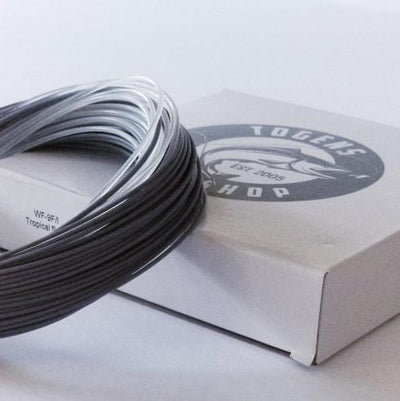HIGHLY EFFECTIVE FLY FISHING TECHNIQUES – SPEY CASTING
Spoons, knives and forks. Different tools for different jobs. Though some of us have tried, a fork cannot replace a knife when you are trying to cut into that 8-ounce New York Strip. No sir, you need a steak knife. In the same vein of thought, Spey casting is fly fishing technique that was born out of necessity. It exists because certain rivers, and one river in particular, demanded it. In this post, we’re going to take a swing (pun intended) at Spey technique, to unearth the origins, styles, mechanics and the wildly effective characteristics of this casting method.
ORIGINS
What’s in a name? If you’re talking spey casting, it actually refers to both a river and technique! Yes, this casting method evolved from Scotland’s famed Spey River. In the mid 1800s, Scottish fly anglers developed the traditional Spey technique because the Spey’s banks were lined with dense forests and rocky ledges that were unfriendly to a traditional backcast. In addition, the Spey River is powerful and a bit too treacherous for wading too far from the bank. In order reach the lies and holds of Atlantic Salmon, these anglers pioneered the spey technique, using heavier, longer (think 18 to 20 feet+) two handed rods and found a way to propel flies great distances (75 – 100+ feet) without a backcast!

DIFFERENT SPEY STYLES
Traditional
The traditional technique involves the use of long, heavy rods and level line of long length (80 – 100 feet). The technique employs keeping a fixed length of line out and basically picking that line up moving it to different positions using a dynamic roll cast.
Scandinavian
The Scandinavian (“Scandi”) spey technique was developed out of tournament casting in the 1960s, in which fly anglers tailored the technique to use shooting heads of varying densities (interchangeable via loop to loop connections for different types of water), which were easier to cast with a shorter rod. Whereas traditional spey technique uses a fixed length of line from one cast to the next, Scandi requires the fly angler to strip the line in to the shooting head section before each cast.
Skagit
The Skagit style of spey casting, much like traditional spey, represents the fly angler’s innovation in response to the requirements of a river. The Skagit is a torrent, fast moving river in Washington State with deep holes holding highly sought-after Steelhead. In the 1980s, fly anglers adapted spey technique to shorter, light weight rods for swinging heavy steelhead flies. To get down to these fish, Skagit spey technique utilizes heavy sections of sinking lines that get to the strike zone fast.

MECHANICS OF A BASIC SPEY CAST
When you break it down, basic spey casting is essentially a roll cast with a directional change. Let’s explore the mechanics of a basic spey cast!
- Lift & Set. Begin to lift the rod with the leader and fly line laid out in front of you as you would to prepare for a basic roll cast. As you lift the rod, the movement of the fly, the leader and a small section of the fly line will create an anchor, or tension with the water’s surface. The anchor point should be aligned (“set”) with your target.
- “D” Loop. Continue to lift to a one-o’clock position, sweeping the rod up. As you sweep, you should see the “white mouse”, or the splash of water created by your anchor being moved to the set position (about one rod length from the angler). Once you stop the lift, a belly section will form a “D” Loop behind you. You are now ready to make a forward cast in the direction of your target.
- Forward Cast. With a large “D” Loop formed behind you (in best form the “D” Loop will have an arrow pointed belly), there should be plenty of energy to load the rod. As you move the rod forward (keeping the rod tip level), point the rod at the intended target and make your forward cast. You’ve now completed a basic spey cast!
Different Types of Spey Casts
There are many different types of casting techniques used in spey casting. As an introduction, let's discuss two of the most common spey casts: the Single Spey and the Double Spey.
- Single Spey. One of the more difficult spey casts to learn is the single spey (the double spey is surprisingly easier!). Basically, this cast begins with the rod tip raised maybe an inch over the water in directly in front of you. Pick the rod tip straight up, then swing the rod down in an arch (imagine a following a valley from one mountain peak to the other) to your side (either right or left depending on your dominant side) to return the rod tip to a high position. This motion will pick up the fly line and leader anchor point. As the anchor point falls back to water, make a forward cast 45 degrees from your starting position. This completes the Single Spey cast!

- Double Spey. This cast is easier to learn then the single spey, because timing is less critical to the cast. The cast is most effective when wind is blowing down stream. In these situations, your cast will have a downstream anchor point. To ready for this cast, first, assume a position that is square to the 45 degree angle to which you would like to cast. With the line out at 45 degrees, flip the rod by crossing your arms, so that the anchor point is established, or set, at a 45 degree angle, one rod’s length away. Now, sweep the rod so to the left to form a “D” loop and proceed with a forward cast in the 45 degree line in front of you. This completes the Double Spey cast!
WILDLY EFFECTIVE
Today, spey casting is like a good kind of fever that fly anglers the world-over are catching. When executed correctly, spey casting techniques enable the fly angler to cover more water, with less effort expended. This translates to more efficient and effective days on the water! As more anglers learn the mechanics of this technique, many find that its application is just as useful on a small creek as it is on the Skagit River! So now you have a basic knowledge of the highly adaptable spey casting technique. Time to get out there and start swinging!





















